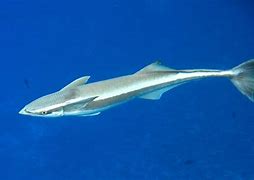
Remora
Remoras, also known as suckerfish or shark-suckers, are a group of fish known for their unique adaptations and interesting symbiotic relationships with other marine animals. Here are some fascinating facts about remoras:
Symbiotic Lifestyle: Remoras have a symbiotic relationship with larger marine animals, such as sharks, rays, and whales. They have a specialized dorsal fin modified into a sucker-like organ that allows them to attach to the bodies of their hosts.
Suction Disc: The modified dorsal fin of remoras forms a suction disc, which they use to attach themselves to the skin or fins of their host. This disc provides a strong attachment and allows the remoras to travel with their hosts without expending much energy.
Commensalism: The relationship between remoras and their hosts is considered commensalism, as the remoras benefit from the association while the host is not significantly affected. Remoras gain protection, transportation, and access to leftover food scraps by hitching a ride on their hosts.
Diet: Remoras primarily feed on the leftover food of their host animals, taking advantage of the host’s hunting or scavenging activities. They also consume small parasites and dead skin cells from their host’s body.
Adaptations for Attachment: Remoras have a streamlined body shape and a strong, muscular sucker disc that allows them to attach firmly to their hosts. They can adjust the position of their sucker disc and detach and reattach quickly when necessary.
Host Preference: Remoras are known to have specific host preferences. Different species of remoras may associate with different host species, and some remoras show preference for specific body regions on their hosts.
Pelagic and Reef Species: Remoras can be found in both pelagic (open ocean) and reef environments. Some species are more commonly associated with pelagic hosts like sharks, while others are found in reef habitats and associate with larger reef-dwelling animals.
Reproduction: Remoras have internal fertilization, and females give birth to live young. The young remoras are not immediately capable of attaching to hosts but develop their sucker disc as they grow.
Diversions and Cleaning Stations: Remoras can often be seen “riding” on sharks or rays. This behavior can provide benefits to both the remoras and the host. Remoras may feed on parasites and dead skin, acting as cleaners for the host, while the host’s movements may help the remoras find food or avoid predators.
Conservation Status: Remoras are not typically targeted by fisheries and are not considered to be under significant threat. However, they can be impacted indirectly by human activities, such as habitat destruction and overfishing, which affect their host species and the overall health of marine ecosystems.